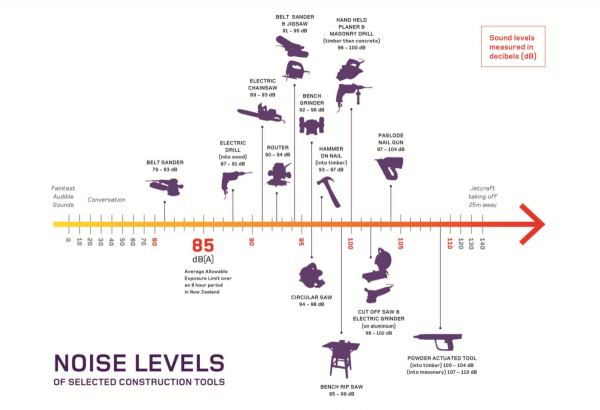Caution with concrete (Part 2)
15 Dec 2013, Prove Your Know How, Safety
Pumping concrete is often required in residential builds and, while builders don’t usually carry out the work themselves, ensuring the site remains safe during the process is everyone’s responsibility.
Pumping is an efficient method of moving and placing concrete, used in the manufacture of pre-cast and tilt-up panels, concrete formwork, slab construction, concrete paving and concrete spraying – and, like any process during a build, safety should be front of mind.
This article provides practical guidance about the health and safety issues of concrete pumping, with guidance for principals, employers, contractors and pump operators (employees or contractors) on how to meet their obligations to provide the safest working environment possible.
Noise hazards
Workers in the construction industry use a variety of tools and machinery in the course of their work. A significant hazard of using this equipment, or working near people who use this equipment, is excessive noise.
Prolonged exposure to excessive noise causes permanent hearing loss. It is not a general loss of hearing but the ability to hear some frequencies of sound. It’s a bit like listening to music with the treble control turned all the way down.
Although a person with hearing loss may hear people talking, it becomes more difficult for that person to understand what they are saying.
Continuous exposure to noise above 85dB(A) (an average noise level of 85 decibels over an eight-hour work shift) will cause permanent hearing damage. As a rule, worksite noise exceeds 85dB(A) if conversation at a normal level between people is difficult when standing one metre apart.
Noise is measured on a logarithmic scale instead of a linear scale. This means that if machine A is 85dB and machine B is 88dB, machine B is, in fact, twice as loud as machine A.
On many construction sites, noise levels can be difficult to control. However, if a noise level assessment shows that workplace noise exposure exceeds 85dB(A) over an eight-hour timeframe, the employer must implement hazard controls such as:
- Elimination (for example, substituting noisy equipment for less noisy equipment, or using less noisy work processes).
- Isolation (for example, noise-reducing booths, where noisy portable work can be conducted).
- Minimisation (for example, reducing worker exposure to the noise by conducting noisy work at less busy times of the day or night, increasing employees’ working distances from noise sources, and providing hearing protection and conducting health monitoring).
MBIE has carried out noise tests on common construction tools to give an estimate of how loud they are. See Figure 1 to view noise levels of selected construction tools.
An increase to normal operating noise levels may occur due to sound being reflected back from other structures. Suitable control measures may need to be put in place to ensure that workers in the area are protected. These workers include:
- The workers in the affected area.
- The concrete pump operators.
- The delivery truck drivers.
- The operators of other associated equipment.
When positioning the pump, efforts should be made to minimise the effect of the surroundings on the workers’ overall noise exposure.
If workers in affected areas are provided with hearing protection to control exposure to noise, the hearing protection must be worn whenever noiselevels exceed 85dB(A). Atmospheric testing is required when hearing protection is worn, as the noise hazards fluctuate depending upon the work activities.
Carbon monoxide hazards
If concrete pumping equipment is set up in an enclosed or semi-enclosed area, special attention should be given to the hazards created by the build-up of hazardous exhaust vapours, particularly carbon monoxide.
Carbon monoxide (CO) is a deadly poison – it is colourless, odourless and non-irritating. Over 10% of people who have survived high carbon monoxide exposures are left with a permanent brain injury. Carbon monoxide is more likely to build up in enclosed or poorly ventilated areas, where machines using petrol, diesel or gas are operated. All practicable steps must be taken to control this hazard.
Effects of Carbon Monoxide exposure
|
Concentration of |
Symptoms |
|
35ppm |
Headaches and dizziness within six to eight hours of continual exposure |
| 100ppm |
Headache within two to three hours |
| 200ppm |
Headache within two to three hours; loss of judgement |
| 400ppm |
Headache within one to two hours |
| 800ppm |
Headache, dizziness, nausea and convulsions within 45 minutes; unconscious within two hours |
| 1,600ppm |
Headache, accelerated heart rate, dizziness and nausea within 20 minutes, death in less than two hours |
| 3,200ppm |
Headache, dizziness and nausea within five to ten minutes; death within 30 minutes |
| 6,400ppm |
Headache and dizziness in one to two minutes; convulsions, breathing stops, and death in less than 20 minutes |
| 12,800ppm |
Unconsciousness after two to three breaths; death in less than three minutes. |
| Hazard |
Controls |
|
Exposure to carbon monoxide from petrol, gas or diesel-powered machinery in confined areas. |
Ensure engine exhaust gases from pump and delivery trucks are directed to the open air. Extraction ventilation and breathing apparatus may be required. |
Register to earn LBP Points Sign in




